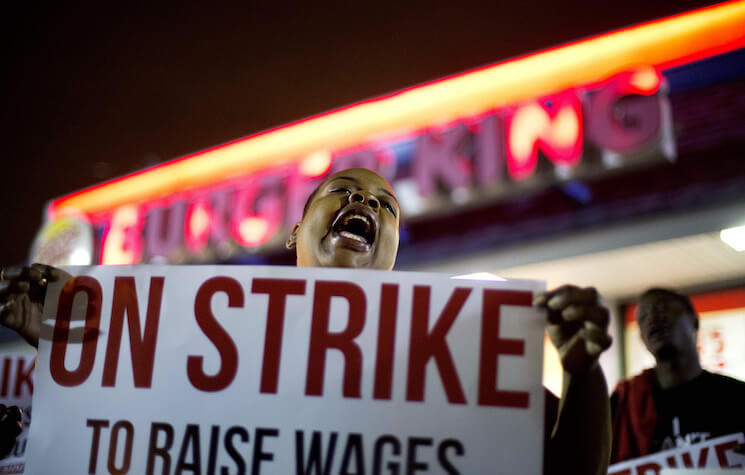Does a higher U.S. minimum wage hurt employment? A look abroad for answers

With a growing number of state and local governments in the United States raising their minimum wage, policymakers in Washington are once again examining the possible consequences of raising the federal minimum wage. While experiences of states and cities around the country will undoubtedly inform the debate, it is also helpful to look at other affluent countries where the federal minimum wage is much higher in order to better understand the effects on individual well-being and the economy on a national level.
A new issue brief by David Howell, a professor of Urban Policy at the New School, does just this. Drawing from recent his working paper (with co-authors Stephanie Luce of The Graduate Center, CUNY and Kea Fiedler of the New School) on the subject, Howell compares the U.S. minimum wage (which currently sits at $7.25 an hour) to those of other affluent, Western nations, using a variety of metrics before comparing these countries’ employment levels.
In his analysis, Howell first looks at the minimum-to-median wage ratio, which economists use to assess the strength of the minimum wage. A minimum wage that is substantially lower the the median wage means that the bottom of the wage distribution is falling further behind the typical worker in the middle of the wage distribution. While the United States is not alone in seeing a decline in this ratio, it does have the distinction of having the lowest minimum-to-median wage rate among the five countries Howell examines: The minimum wage in the U.S. is worth only 37 percent of what the median worker earns per hour. (See Figure 1.)
Figure 1

Howell also looks at the purchasing power of the minimum wage by comparing the starting wages at McDonald’s restaurants (whose starting pay tends to closely align with the minimum wage), calculating the number of Big Macs a worker can buy with an hour’s pay. He finds that starting pay is not only comparatively low in McDonalds in the United States, but the price of a Big Mac is also high. This means a U.S. worker can buy only 1.7 Big Macs an hour compared to 2.5 in France in 3.8 in Australia, for example. (See Figure 2.)
Figure 2

On top of that, the United States lacks the kind of robust social supports that other countries provide for working families, meaning that one’s income plays a larger role in a family’s well-being in the United States compared to its affluent, Western counterparts. Minimum wage workers in the United States, therefore, have to work extraordinarily long hours—59 per week—to keep a two-child family out of poverty (if they are part of a single-earner couple). This long workweek is significantly higher than many other affluent nations (See Figure 3.)
Figure 3

But what does a low minimum wage mean for the overall economy? Howell points out that the “conventional wisdom” states that “there are big wage-employment tradeoffs associated with a high minimum wage.” Those who adhere to this kind of thinking believe that employers may compensate for the extra labor costs by hiring fewer people. That means that some low-wage workers, particularly those who are young and less-educated, are shut out of a job and overall employment levels are lower. Yet Howell’s international comparison finds scant evidence for such a tradeoff. (See Figure 4.)
Figure 4

And even when he looks specifically at the youth unemployment rate, Howell finds that there is no notable difference between the United States and other nations with much higher minimum wages. Discussing France and Australia, he notes that the two countries have “legislated a high minimum wage by international standards, yet, by both indicators, youth unemployment fell sharply between the early 1990s and the global 2008-2010 economic crisis—to levels below the United States.”
The only difference Howell finds is that, intuitively, the United States has a higher share of low-wage workers relative to the overall working populations. These results suggest that a country’s employment levels are more affected by other non-minimum wage related factors. As U.S. policymakers weigh the consequences of a higher minimum wage at the national level, a look at the experiences of other nations demonstrates that the minimum wage is one of many elements that affect a nation’s employment levels.

